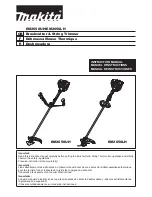
8 Preparing for sterilization
Thermo Scientific
45
50112712_082007_GB
The vacuum test consists of three phases. The chamber is first evacuated from
ambient pressure to 7 kPa (
Δ
p
1
). During the following five-minute pre-equalizing
phase, the chamber pressure approaches its equilibrium. The pressure may rise
slightly. The pressure change during this equalizing phase (
Δ
p
2
) must not exceed
one tenth of
Δ
p
1
(
Δ
p
2
<
0.1
Δ
p
1
). During the next ten-minute test phase (
Δ
p
3
) the
pressure must not increase by more than 1.3 kPa (
Δ
p
3
≤
1.3 kPa). (See Diagram 3,
Vacuum test.)
If the threshold limits of the respective phases are exceeded, the cycle display (18)
and the batch printout will show an error message (see Chapter 14).
The second process is the Empty cycle maintenance program, in which the empty
sterilizing chamber (9) is preheated to working temperature, preparing the unit for
the third program, the Bowie & Dick test. The sterilizing chamber and the steam
generator are deaerated for this purpose.
Finally, the green START/STOP key (20) will flash to indicate that the Vacuum &
Empty program is completed.
♦
Press the START/STOP key (20).
The program is terminated. The door is automatically unlocked, and the door
indicator (21) changes to green again.
DANGER
Hot steam may escape when door (1) is opened.
Scalding hazard!
Step back when opening the sterilizer.
INFORMATION
After the Vacuum & Empty program has been executed, you
have to select and run the Bowie & Dick test.
Program:
Bowie & Dick test
The daily Bowie & Dick test is essential in assuring the quality of the sterilizing
conditions. It is used to test the load for steam penetration and air removal.
Two test systems with indicator test sheets are available for this program.
1. Bowie & Dick simulation test packs
This first test system features an indicator test sheet that is placed between
sterilizing articles (preferably laundry) inside the sterilizing chamber. A simulation
test pack is used to aid in establishing identical measuring and test conditions. To
this end, an indicator test sheet that complies with DIN EN 867-3 (February 1997)
is inserted in the middle of the test pack, which is then clamped into a test frame.
The test pack consists of special DIN A5 paper that can be reused 15 times (see
Figure 11).
For details, see the detailed user instructions by the manufacturer enclosed with
the test pack.















































